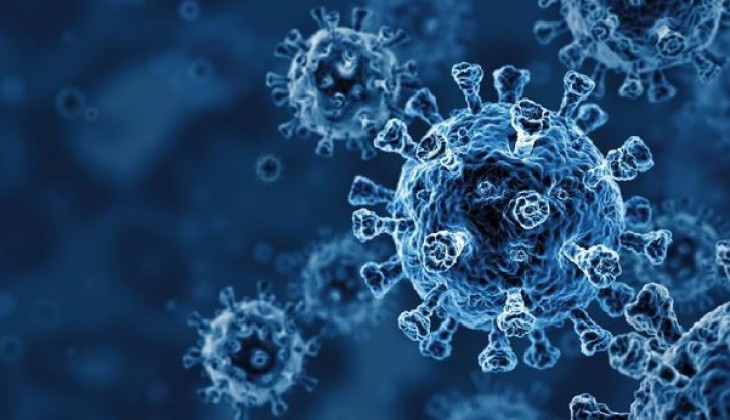No rush to vegetarianism yet: Mad cow scare hasn’t changed eating habits
Updated: 4:56 p.m. ET Jan. 02, 2004
 Droves of Britons gave up meat during England�s mad cow outbreak in the 1980s, but since the discovery of an infected cow in Washington state American vegetarians mostly have been careful not to take advantage of a situation that could cost lives and cripple a $40 billion industry.
Droves of Britons gave up meat during England�s mad cow outbreak in the 1980s, but since the discovery of an infected cow in Washington state American vegetarians mostly have been careful not to take advantage of a situation that could cost lives and cripple a $40 billion industry.
�I caution vegetarians from using mad cow disease as a recruiting tool,� said Joseph Connelly, editor of San Francisco-based VegNews magazine. �Mad cow disease is not a good thing no matter how you look at it.�
Vegetarians generally eat no meat, fish or poultry. Vegans eat no animal products at all, including dairy and honey.
Though vegetarian headcounts are imprecise, Britain�s meat-free population surged following its bout with mad cow, which killed 143 people, according to Tina Fox, spokeswoman for the Vegetarian Society of the United Kingdom.
She estimates up to 10 percent of the population is vegetarian, and up to 40 percent has reduced its meat consumption.
Vegetarian businesses and advocacy groups mostly say the discovery of mad cow in the United States still is too isolated to prompt people to change their diets.
No human cases resulting from outbreak
�We�re not really at that stage,� said Charles Stahler, co-director of the Baltimore-based Vegetarian Resource Group. �They haven�t shown that anyone is sick, so it�s really very different here.�
For now, the discovery of one sick cow mostly will steel the minds of existing vegetarians.
�It�s giving them another good reason to stay firm in their beliefs,� said Carla Davis, managing editor of Glen Allen, Va.-based Vegetarian Times magazine, which has a monthly circulation of 300,000.
Vegetarianism has been on an upswing in the United States. Vegetarian Resource Group estimates there are roughly 5.7 million adult vegetarians, up from about 2 million a decade ago.
Johanna Dwyer, a nutrition professor at Tufts University in Medford, Mass., attributes that to a growing awareness of healthy eating styles, and wider availability of better tasting vegetarian foods.
But she doesn�t think mad cow will spur more converts on its own, since many vegetarians have philosophical reasons, such as animal rights, that influence their food choices.
�That means buying into a whole bunch of things more than a health concern,� she said. �Some people may want to go meatless because of that, but I don�t think it will be many.�
Few changes in shopping habits reported
Natural foods grocers, including giants Whole Foods Market and Wild Oats, said sales data aren�t in yet, but so far shopping habits don�t appear to have changed.
“I’ve seen nobody coming in panicking, saying ‘I have to become a vegetarian,” said John Hutchins, manager of the Concord Food Co-Op in Concord, N.H. �But if this keeps going I wouldn�t doubt if more people start experimenting.�McDonald�s, Burger King and Wendy�s say hamburger sales remain unaffected.
The appearance of mad cow has some vegetarian businesses considering how they will address the issue.
�I definitely wouldn�t try and tell people to eat vegan because of mad cow,� said Tim Boissy, whose 5-year-old Los Angeles business Vegin� Out makes home deliveries of vegan meals. �But I would kind of use it as a tool to educate people a little bit, to try to help them look at new alternatives.�
‘MAD to eat meat’
People for the Ethical Treatment of Animals seems less concerned about appearing political. The Norfolk, Va.-based animal rights group already has activists around the country distributing information about vegetarianism outside restaurants and launched a new ad campaign: �You would have to be MAD to eat meat.�
Bruce Friedrich, the group�s spokesman, said demand for PETA�s free vegetarian starter kits � a pamphlet of recipes and advice for changing one�s diet � has been so strong the group called in employees from vacation to handle the requests � 10,000, up from the usual 4,000.
�The USDA and the meat industry are playing Russian roulette with the health of the American people, and the national consciousness is being awakened� he said. Though meat-and-potatoes Americans may not be rushing to change their own ways, there is one aspect of the population that is adapting. Amid concerns (which federal regulators say are unfounded) that tainted animal products could get into pet food, some vegetarians have decided that what is good for them is good for their furry friends. �I�m just not going to take that chance anymore,� said Vineeta Anand, a vegetarian from Alexandria, Va., who says she�s changing the diet of her 16-year-old cat, Cheetah.
Source: msnbc.com

 Twenty-eight years ago, Jake Perez was born three months early. Despite his premature arrival, he left the hospital healthy and with no signs of brain damage. But before his first birthday, his mother noticed something was not right. “It was hard for him to get up the crib, and of course my family, my brothers and sisters, told me, ‘Something is wrong with Jacob,’ ” Maria Perez said.
Twenty-eight years ago, Jake Perez was born three months early. Despite his premature arrival, he left the hospital healthy and with no signs of brain damage. But before his first birthday, his mother noticed something was not right. “It was hard for him to get up the crib, and of course my family, my brothers and sisters, told me, ‘Something is wrong with Jacob,’ ” Maria Perez said. The deaths of two conjoined Iranian twins following unprecedented surgery to separate them has prompted an outpouring of grief around the world.
The deaths of two conjoined Iranian twins following unprecedented surgery to separate them has prompted an outpouring of grief around the world.  One of the conjoined adult Iranian twins separated after unprecedented surgery has died, according to officials at Singapore’s Raffles Hospital.
One of the conjoined adult Iranian twins separated after unprecedented surgery has died, according to officials at Singapore’s Raffles Hospital. The operation is a landmark procedure. Although Singapore doctors performed a similar operation in 2001 on infant Nepalese girls, surgery on adult twins is unprecedented.
The operation is a landmark procedure. Although Singapore doctors performed a similar operation in 2001 on infant Nepalese girls, surgery on adult twins is unprecedented. The World Health Organization scratched the last name off its worldwide list of SARS hotspots Saturday, declaring that Taiwan had contained the virus at last.
The World Health Organization scratched the last name off its worldwide list of SARS hotspots Saturday, declaring that Taiwan had contained the virus at last. New research suggests there is little value in couples abstaining from sex to improve their chances of conceiving by saving sperm for the woman’s most fertile time of the month.
New research suggests there is little value in couples abstaining from sex to improve their chances of conceiving by saving sperm for the woman’s most fertile time of the month. A Visit to the Dentist
A Visit to the Dentist